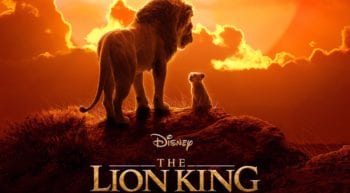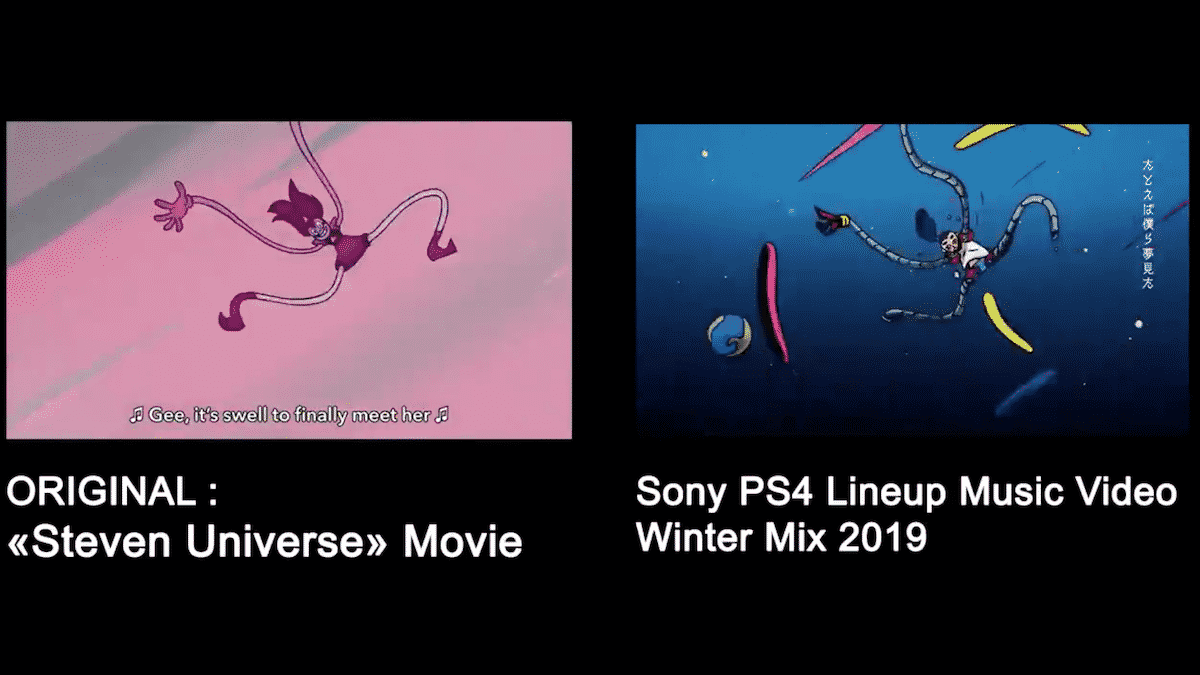PlayStation Promo Pulled Over Plagiarism
Plagiarism animation domination...

Sony recently uploaded a promo video from PlayStation Japan that highlighted new releases for the console. Just in time for the holidays, it was meant to be a way to promote both the system and new games coming out for it.
The promo video, in addition to the usual video game trailers and clips one would expect, included several animated sequences from director Kevin Bao. The short sequences were action-packed pieces of animation in Bao’s typical gritty but colorful style.
However, shortly after it was uploaded, users began to notice very striking similarities between those animated portions and earlier works. Ultimately, it was Marc Aguesse, the operator of the French animation site Catsuka, that pulled the similarities together in a video uploaded to Twitter.
Note: Aguesse credited student animators Ian Jones-Quarterly, Carlo Monserrat, Oleg Kositsyn and Eduardo Adsuara for “spotting the first rips.”
The video speaks for itself. Though the style is very different between each of the clips, the action, poses, framing, timing and other elements are virtually identical to works such as Stephen Universe: The Movie the anime series FLCL and more.
Sony quickly pulled the video, however, several users have reuploaded it in order to keep the evidence alive.
As for Bao, the animation studio that represented him (but was uninvolved in this project), Eallin Animation, has severed all ties with him and released a statement that they were unaware of the plagiarism. He is currently removed from the company’s website, including from their list of directors.
Bao himself has seemingly gone into hiding. Not responding to requests for comment and shuttering his Instagram page. It may be just as well though as the animation community has been seeking out and finding other examples that they say are plagiarisms by Bao.
Bao’s career is, most likely, over as a professional animator and director. That said, there is a lot to unpack in this case, especially with how little we hear about plagiarism in animation.
Plagiarism in Animation

We don’t hear a great deal about plagiarism in animation and it’s for two very simple reasons.
The first is that animation, compared to many other forms of media, is more difficult to get started in and publish in. Plagiarism is common for either the lazy, namely those that put outcomes ahead of processes, and those that are not confident in their work. The challenge inherent in getting into animation reduces that.
The second, and perhaps more important, is that it is more difficult to spot. As this case shows, spotting plagiarism requires eagle-eyed viewers with good memories. There are no plagiarism checkers for animation and no search that can easily spot similar (but not identical) works. In short, no automated tool was going to spot the similarities between the PlayStation video and the original works.
Still, there have been allegations and news stories in recent history.
The most tragic deals with the July arson at Kyoto Animation Studio that claimed 33 lives. The arsonist claimed that the studio had plagiarized his work. However, no validity has been found in those claims and, even if they had, they obviously do not justify the taking of human life. Still, there is no proof the studio committed the plagiarism that they were accused of.
A much more relevant ongoing dispute looks at the Disney film The Lion King (1994), which many believe to be a plagiarism of Kimba: The White Lion, a manga and anime that first appeared in 1950 and has multiple versions and resurrections up to the modern-day.
While that case certainly does look at similarities in the artwork and the animation, it focuses most heavily on the characters, story and themes of the two works.
Though the overlap between the two is significant and there is evidence that Disney employees were aware of Kimba while working on The Lion King, the allegations have not harmed either the original film or the recent remake.
The situation was similar for the Chinese animated film Nezha, which was accused of plagiarizing an earlier animated musical Memory. However, once again, looked more at the content of the films than the animation itself.
Interestingly, the film Memory was accused of plagiarizing an animation of a solar system and said that it was investigating the claim and would take responsibility if it were found to be true.
Still, between the lengthy history and popularity of animation, we would expect to find more headline-grabbing cases of plagiarism, similar to what we do with film, music, writing, etc. They just aren’t there and, most likely, it’s for the reasons stated above.
However, that doesn’t mean that the problem won’t grow in the near future. As animation becomes more accessible to more people, plagiarism is likely to rise with it.
The Case at Hand
Turning our attention back to the case at hand, the issue is very clear cut and it’s easy to see why Sony and Eallin Animation both responded so quickly. Though it wasn’t necessarily a “tracing” in that the styles were very different, the framing, timings, poses, actions and other elements were all perfectly synchronized.
In short, it was a flawless recreation in a different style. However, this wasn’t an homage nor was the original work attributed, it’s pretty clearly a plagiarism.
But, while the actions of Bao were definitely out of line, Eallin Animation handled the situation about as well as possible. Almost immediately the company released two statements about the situation, both decrying the actions Bao and clarifying their lack of a role in this particular video, and they severed ties with him.
While Sony was right to quickly remove the video amid the allegations, they still have not released a public statement about the plagiarism. As the company that greenlit and published the video, a statement that they were unaware of the plagiarism and what action they are taking in light of it would be helpful in bringing closure to this case.
Still, given Sony’s approach to this case, it seems unlikely we will get such a statement anytime soon.
It’s not a perfect outcome, but at least Sony took the biggest step needed in this case.
Bottom Line
In the end, the thing I find most interesting and impressive is the response from the community on this issue. The animation community quickly rallied around the case and not only found the issues in this video, but others in Bao’s career and brought them to light.
In a time where it feels like plagiarism is being seen as less and less of a misdeed, this response is both heartening and fascinating.
Hopefully, other communities and artists can take a lesson from this and learn how to spot and root our plagiarists in their midst. The fact that they were able to do this without resorting to full-on mob justice is just another reason to hold this up as a model.
The internet is a powerful tool for dealing with plagiarism. This is a great example of how to wield it both effectively and ethically to that end.
Want to Reuse or Republish this Content?
If you want to feature this article in your site, classroom or elsewhere, just let us know! We usually grant permission within 24 hours.
